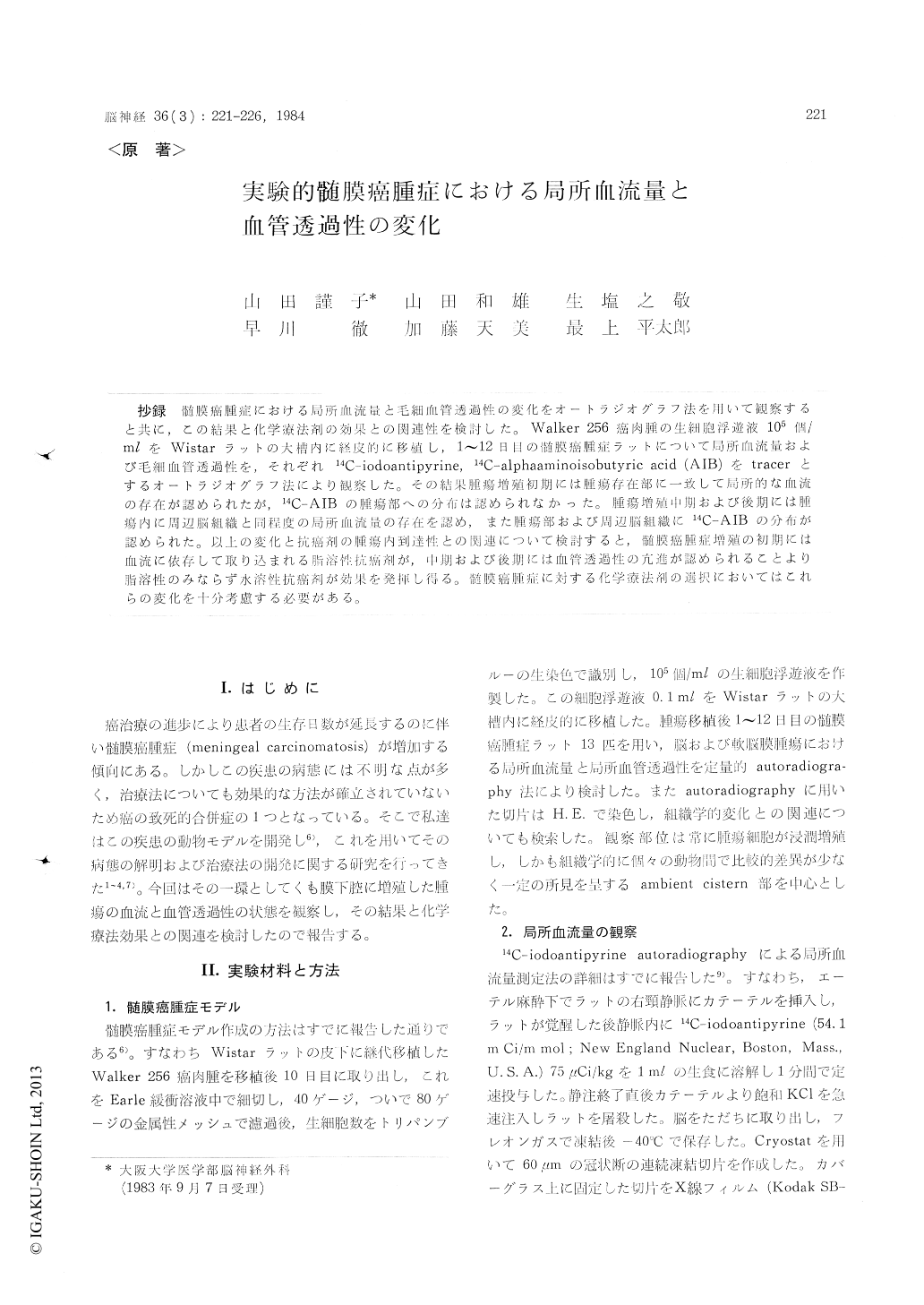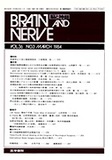Japanese
English
- 有料閲覧
- Abstract 文献概要
- 1ページ目 Look Inside
抄録 髄膜癌腫症における局所血流量と毛細血管透過性の変化をオートラジオグラフ法を用いて観察すると共に,この結果と化学療法剤の効果との関連性を検討した。Walker 256癌肉腫の生細胞浮遊液105個/mlをWistarラットの大槽内に経皮的に移し,1〜12日目の髄膜癌腫症ラットについて局所血流量および毛細血管透過性を,それぞれ14C-iodoantipyrine,14C-alphaaminoisobutyric acid (AIB)をtracerとするオートラジオグラフ法により観察した。その結果腫瘍増殖初期には腫瘍存在部に一致して局所的な血流の存在が認められたが,14C-AIBの腫瘍部への分布は認められなかった。腫瘍増殖中期および後期には腫瘍内に周辺脳組織と同程度の局所血流量の存在を認め,また腫瘍部および周辺脳組織に14C-AIBの分布が認められた。以上の変化と抗癌剤の腫瘍内到達性との関連について検討すると,髄膜癌腫症増殖の初期には血流に依存して取り込まれる脂溶性抗癌剤剤が,中期および後期には血管透過性の亢進が認められることより脂溶性のみならず水溶性抗癌剤が効果を発揮し得る。髄膜癌腫症に対する化学療法剤の選択においてはこれらの変化を十分考慮する必要がある。
Local blood flow and capillary permeability of the rats with meningeal carcinomatosis were stu-died with macroautoradiography, and relationship between blood flow, permeability and effects of chemotherapy is discussed.
Experimental meningeal carcinomatosis was indu-ced in the Wistar rats by inoculating Walker 256 tumor into cisterna magna. One to 12 days after inoculation, rats were used for measurements of blood flow (by 14C-iodoantipyrine) and capillary permeability (by 14C-alpha-aminoisobutyric acid). Images of autoradiography and corresponding his-tological appearances were analized.
In the early stage of tumor growth (2 to 3 days after inoculation), a few layers of tumor cells were identified in the ambient cistern. Blood flow in the vicinity of the tumor cell layer was noted, but no increase in capillary permeability was found. In the middle stage of tumor growth (3 to 5 days after inoculation), 10 to 20 layers of the tumor cell was noted in the ambient cistern. Blood flow in the tumor was evident and capillary per-meability began to increase. In the late stage of tumor growth (6 to 12 days after inoculation), a mass of the tumor cells was noted in the ambient cistern. In this stage, blood flow in the tumor was similar to that of cerebral gray matter and capil-lary permeability increased markedly. Brain adja-cent to the tumor also showed increase in capil-lary permeability.
The result correlated well to the previous result of experimental chemotherapy. Form those data, lipid soluble drugs which cross blood-brain barrier readily are recommended for the early stage of meningeal carcinomatosis, and water soluble drugs which has limitations to cross blood-brain barrier can not be recommended. On the other hand, water soluble drugs as well as lipid soluble drugs are recommended in the late stage of meningeal carcinomatosis, since both of these drugs can reach to the tumor. In the chemotherapy of meningeal carcinomatosis, the drugs which may be suitable to the stage of the disease must be selected.

Copyright © 1984, Igaku-Shoin Ltd. All rights reserved.


